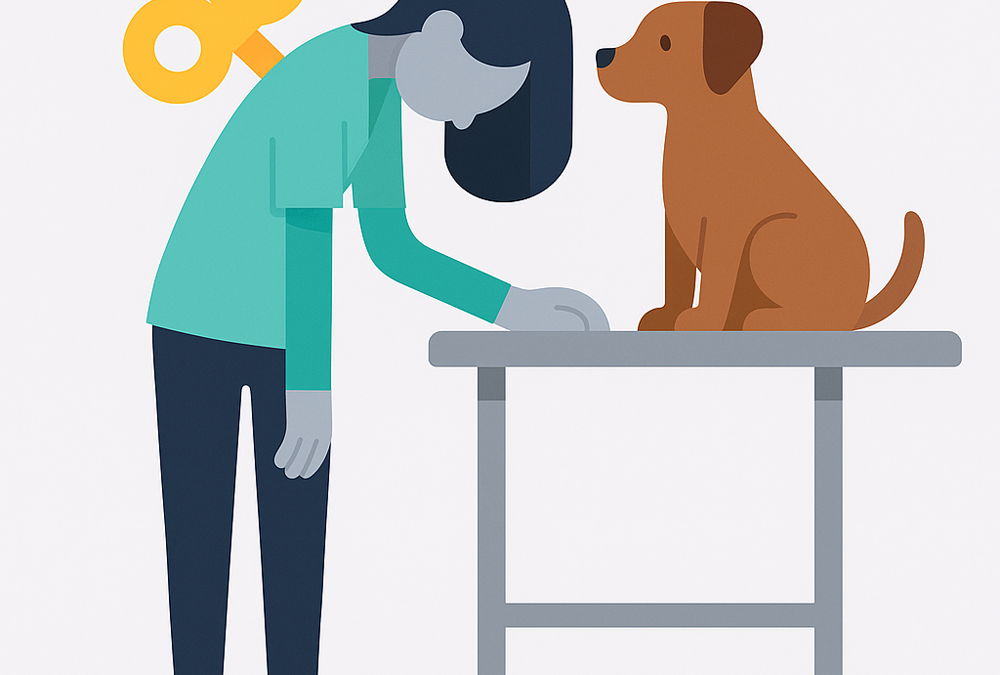Last month, I wrote about No-Show Energy and its impact on the future of Vet med. Let’s talk about a growing workplace vibe that no one asked for but everyone’s feeling: no-show energy. You know the one—where people commit to meetings, check-ins, tasks, or even just answering that text message . . . and then ghost.
It’s the “I’ll be there or hang on, just a second” followed by radio silence. And while it may seem small in the moment, when no-show energy becomes a pattern, it starts to erode productivity, trust, and team culture.
Where Did Everyone Go?
Let’s first talk about the ghosting on meetings. It used to be that if a meeting or an appointment was on the calendar, you were expected to show up (virtually or in person), camera on, ready to roll. But now? Attendance feels optional. More employees are skipping internal calls, zoning out with cameras off, or saying yes and never showing up at all.
According to a 2024 report from Microsoft, 68% of workers say they don’t feel fully present in virtual meetings—and nearly 1 in 4 admit to multitasking during calls most of the time. And the number of meetings we could no-show to is rising: the average number of meetings per week has increased by 153% since 2020.
Add to that calendar overload, Zoom fatigue, and workplace burnout, and it’s no wonder people are opting out—quietly, and often without explanation.
The Sneaky Way No-Show Energy Has Creeped Into Vet Med
In Veterinary medicine, no-show energy can be more subtle—but just as disruptive. We’ve all seen it. It’s not necessarily someone skipping a shift (though that happens, too). According to Dr. Cheryl Good, Chief Veterinary Officer at The Bridge Club, it’s:
- The team member who avoids daily clinical tasks and finds other things to do—reorganizing a shelf, deep-diving a product label, or “researching something important” instead of jumping into treatment or room turnover.
- The healthcare team member who’s mentally checked out, needs multiple reminders to complete standard tasks, or delays prepping a patient until the last minute.
- The person who says they’ll finish charting by the end of day . . . and rolls it over into tomorrow. Again.
- The person who is physically there, but emotionally or mentally disengaged—impacting flow, morale, and case efficiency.
It might not seem like much in isolation. But when no-show energy becomes embedded in the daily rhythm of a clinic, it burns out the rest of the team.
No-Shows = No Flow
When people don’t follow through, it disrupts more than just one task or meeting.
- Teamwork Breaks Down – Colleagues pick up the slack, which breeds resentment.
- Patient Care Slows Down – Delayed treatments or follow-ups mean more stress and potentially poorer outcomes.
- Communication Gets Messy – People start assuming others won’t show up or contribute, which erodes trust.
- Morale Takes a Hit – A disengaged teammate can tank the vibe for the whole shift.
The Financial Toll: What No-Show Energy Is Really Costing Us
Wasted Salaries on Ghost Tasks and Meetings
The average U.S. meeting costs about $338 per hour per participant (Harvard Business Review). If a five-person meeting in a practice gets hijacked by late arrivals or ghost RSVPs, you’ve just burned hundreds of dollars in non-billable time.
Delays That Multiply
From treatment delays to surgeries starting late, even small disruptions stack up. Inefficiency in a single role often ripples across the team and the appointment schedule—costing clinics revenue, patient satisfaction, and staff energy.
Rework and Burnout
When one team member ghosts responsibilities, others have to double up. Over time, that creates frustration, exhaustion, and turnover—which is already a critical issue in Vet med.
Lost Client Trust
Disorganization from internal disengagement spills into client perception. If a tech forgets a callback or a chart’s incomplete, trust is chipped away—and client retention suffers.
So, What Can We Do About It?
No-show energy isn’t inevitable—but it is contagious. Here’s how we can reset the tone, individually and as a team:
Call It In, Not Out – If you see it, address it with curiosity, not criticism. “Is something going on?” goes a lot further than “Why didn’t you do this?”
Reset Expectations – Clear role responsibilities, daily checklists, and open communication go a long way to keep everyone focused and accountable.
Respect Bandwidth – If your team is overbooked or emotionally tapped out, engagement will suffer. Acknowledge capacity and support realistic workloads.
Be Real, Not Robotic – It’s okay to say, “I’m not at 100% today.” What’s not okay is disappearing without communication. Normalize honest conversations.
Celebrate the Show-Ups – Create a culture that recognizes consistency, follow-through, and engagement—not just high output.
No-show energy isn’t just about skipping meetings. In Vet med, it’s that creeping disengagement that slows momentum, frustrates coworkers, and wears down the culture. But with a little more awareness and a lot more clarity, we can start showing up—for our teams, our patients, and ourselves.

